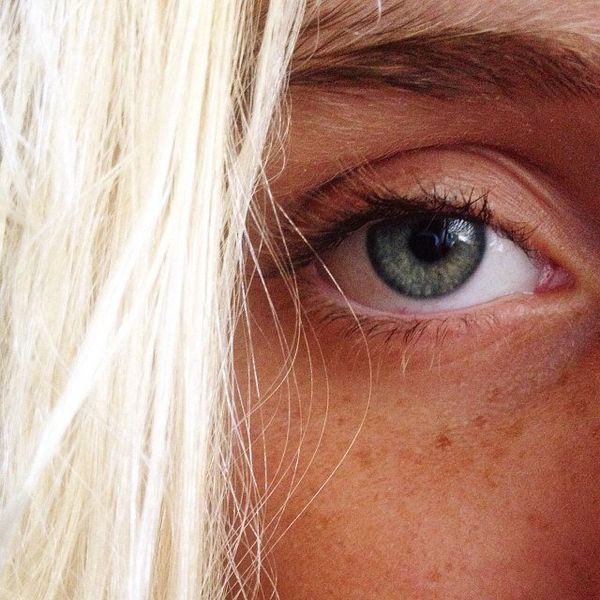I have always relied on my words to express my thoughts and do my best to bring attention and awareness to current issues I find important. This week’s article is centered on mistreatment that has taken decades to be revealed because the victims had no words, no voice. Although we can never know what these highly intelligent animals were thinking, I am certain that if they had voices, this is what they would say.
Lolita
When I was four, I was kidnapped. Eighty members of my community were corralled into sea pens, and seven of the youngest were kidnapped from their ocean home and sold as commodities.
The same day, the men that kidnapped me killed five of my family members, my mother included.
Their bodies were cut open, filled with heavy rocks and chains, and thrown into the ocean. I watched in a cage as they sank helplessly to the bottom of the ocean floor where no one would ever find them.
The men sold me for six thousand dollars.
I was dumped into a tight space with another victim, both of us screeching, crying and barely able to move about.
Each and every day, customers come by to see us, to be “entertained”.
And when I can’t put on a show because of heat exhaustion, painful sunburns and blisters, lack of food, depression, physical injuries from the aggravated victim sharing the space with me, they starve me.
They cover my blistering burns with black zinc oxide to keep my pain a secret from their customers.
When they do feed me, my food is drugged.
I have no voice, no way out, no joy.
My name is Lolita, I am a captured and enslaved orca seen as no more than a source of profit to my owner, SeaWorld LLC.
I belong in the ocean.
Hugo
In February, 1968 I was captured in Puget Sound, Washington.
I watched my mother shot to death by my capturers for trying to save me.
After years of moving me from one tiny space to the next, I ended up in a trapped environment with Lolita.
We were forced to perform daily routines and mate, while our owner told stories of our natural and immediate love for each other so his customers would spend even more money to watch us interact.
While Lolita expressed her sadness crying every night, I needed to find a way out. The only way was to die.
I would bash my head against the walls, making sure to be near the viewing windows.
It didn’t matter that I ripped apart parts of my body. It didn’t matter that my owner performed surgeries to patch me up again. I was trapped and depressed, there was no other option.
On March 4, 1980, after twelve years of entertaining to survive and repeated brutal, self-harm I took my own life. I bashed my head against the wall late at night when no one could stop me, and died of a brain aneurysm that night.
When they found me, there was no plaque, no memorial, and no grief.
They used a crane to dump my remains into the Miami-Dade landfill and shielded the truth from the public for decades.
My name was Hugo, I was a captured and enslaved orca seen as no more than a source of profit to my owner, SeaWorld LLC.
I belonged in the ocean.
Tilikum
November of 1983, at 2 years old, I was torn away from my family and ocean home.
After my capture, I was held in a cement holding tank for close to a year awaiting transfer to SeaLand.
I swam in small circles and float aimlessly at the surface of the water, far away from the freedom of my home where I swam more than a hundred miles a day alongside my family.
Days before my life-threatening transport, I was covered with lanolin, an oil applied to my whole body to prepare me for long transport without water.
I was young and new to the scene but my trainers never took it into account.
When I did not perform a trick correctly, my tankmates and I were starved. They would bite and rake my entire body with their teeth leaving me covered with gashes, and wounds. Not to mention the stomach ulcers from stress and food deprivation.
On February 21, 1991, my trainer, Keltie Byrnes fell into my pool. I was suffering sunburns, rakes, starvation, and depression.
I pulled her to the bottom of the pool, and the other orcas in my pool tossed her around until she drowned. Sea Land closed and I was sold to SeaWorld in a matter of days.
They purchased me for their breeding program, and forcefully impregnated dozens of orcas.
My life at SeaWorld was one of stress, frustration, and confinement. I had 0.0001 percent of the quantity of water that I needed, and my anger continued to turn to aggression.
My captivity forced the deaths of Daniel Dukes in 1999 and Dawn Brancheau in 2010.
Instead of setting me free, I was locked in a tiny enclosure with little space to move, no communication with other orcas, and no interaction with humans.
After more than a year of isolation, SeaWorld dumped me back in the performing pool.
Soon after that, January 6, 2017, I died from bacterial infection at the age of thirty six, three decades before my average life expectancy in the wild.
My name was Tilikum, I was a captured and enslaved orca seen as no more than a source of profit to my owner, SeaWorld LLC.
I belonged in the ocean.
These stories are not isolated cases. SeaWorld has always been and continues to be part of the problem that sees thousands of dolphins slaughtered every year and the slave trade in small cetaceans spreading internationally. Forty eight orca whales have died in captivity at SeaWorld, all died decades before their average life expectancy as a wild species. For instance, the average life span of a female orca in the wild is eighty years old. At SeaWorld, it is thirteen years. Sea World has never been a place of educational value or marine conservation. Children cannot learn about animal behavior from watching majestic marine animals trapped behind glass screens. In all honesty, the only thing that people learn from visiting a SeaWorld theme park is how miserable life is for the animals confined there. Regarding “SeaWorld’s good nature when it comes to non-profits”, for every one million dollars SeaWorld makes, they donate only six hundred dollars to whale conservation. This means that for each ticket bought, only five cents goes to non-profits.
Give animals the right to live. Stop fueling the industry that exploits and abuses animals for financial gain. It is our job to be dedicated to helping animals like these because there are already so many people dedicated to hurting them.
Fortunately, SeaWorld’s business has plummeted recently. From its peak of nearly forty dollars per share in 2013, SeaWorld stock has fallen approximately seventy percent and is trading at twelve dollars today as the company announces more job cuts. But, there is still so much to be done. More than thirty orcas like Lolita are languishing in tanks because of SeaWorld. If we don’t take a stand, they will die of unnatural causes in these tanks decades before they should.
Education on this matter is incredibly important. I suggest watching the documentary Blackfish by CNN directed by Gabriela Cowperthwaite. The eye-opening documentary focuses on “the story of Tilikum, a captive killer whale that has taken the lives of several people, underscores problems within the sea-park industry, man’s relationship to nature, and how little has been learned about these highly intelligent mammals” (IMDb). You can read first-hand accounts from previous SeaWorld trainers speaking up about the animal cruelty.
https://news.nationalgeographic.com/2015/03/150329-orca-blackfish-seaworld-dolphins-killer-whales-ngbooktalk/ (This is the transcript of an interview with John Hargrove, a former senior orca trainer.)
Lastly, get involved. Attend a protest, write a letter, post a comment, tweet, or anything else to give these animals a victory. There are hundreds of petitions that are actually making great positive change for captive animals worldwide. For example, SeaWorld recently ended their orca breeding program after PETA got lawyers to present the court with dozens of petitions from change.org signed by hundreds of thousands of people against the program along with other evidence.
Here are just a few petitions waiting for support. The Petition Site
Most importantly, please boycott SeaWorld. It is the place where happiness tanks, and does not deserve your time or money.
These animals are not ours to stand on, pose on top of, ride, force to perform jumps and backflips, confine as prisoners. These animals are not ours. They are not our entertainment. Raise your voice for those who have none.



















